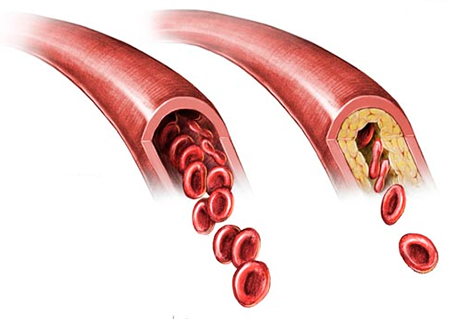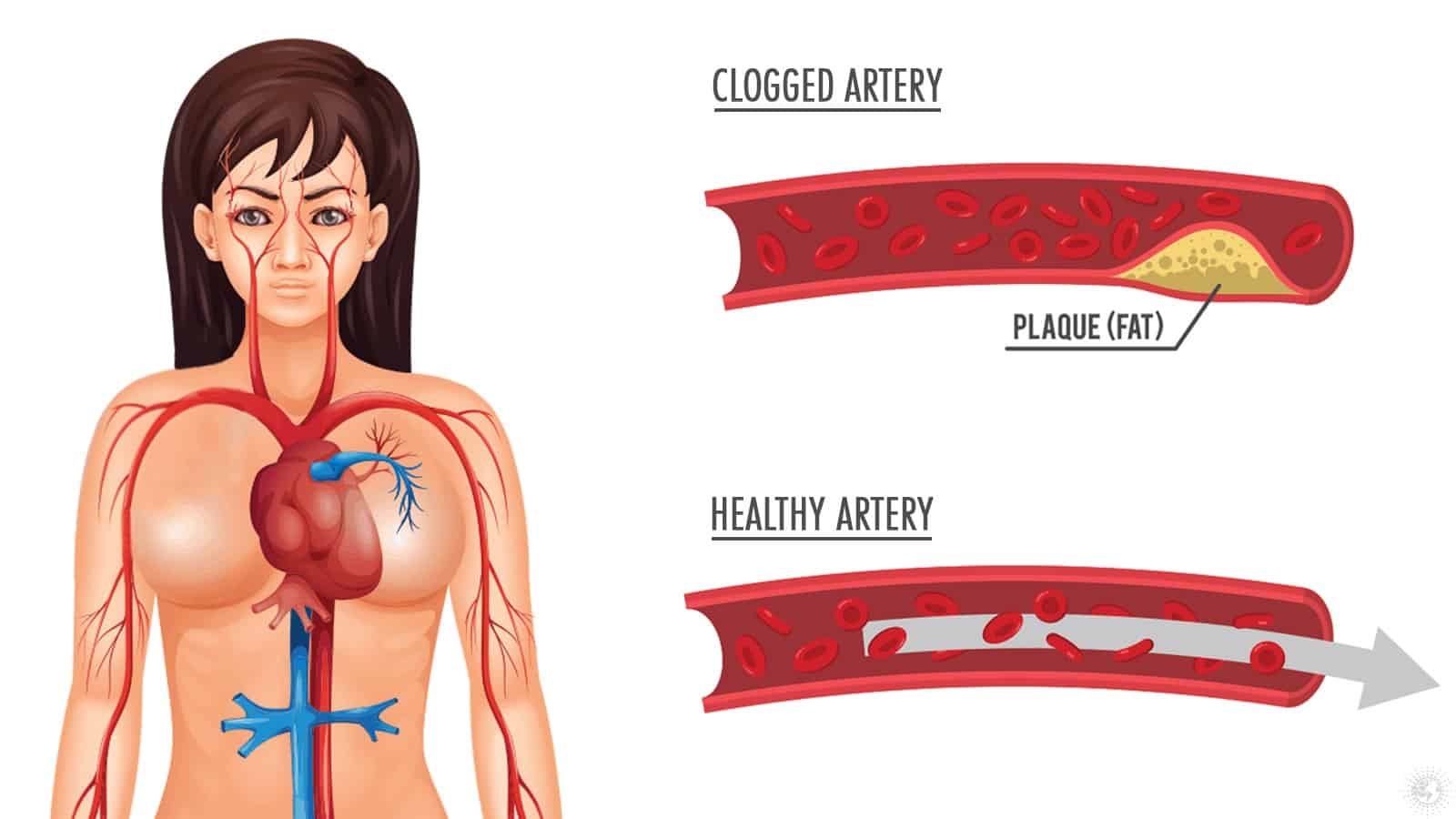Clogged arteries can silently progress over time, leading to severe and potentially life-threatening conditions like heart attacks, strokes, and cardiovascular disease. Detecting the signs of artery blockage early is crucial, yet many symptoms go unnoticed until the damage is done.
But how can you recognize these warning signals before it’s too late? While some symptoms may be unexpected, others are more common, though often overlooked. In this article, we’ll explore five critical signs of clogged arteries that everyone should be aware of—some of which might surprise you.
By identifying these early indicators, you can take proactive steps to protect your heart health and potentially prevent serious complications. Whether you’re already experiencing symptoms or simply aiming for prevention, understanding what to look out for is essential. Let’s dive into the warning signs that could save your life.
Key Takeaways
- Early Warning Signs Matter: Lower back pain, calf pain, and jaw discomfort can indicate clogged arteries and should not be ignored.
- Prevention Is Key: Adopting a heart-healthy diet, exercising regularly, and managing stress are essential to avoid artery blockages.
- Get Diagnosed Early: Simple tests like an ECG, echocardiogram, or coronary angiogram can detect blockages before they lead to severe complications.
What Are Clogged Arteries?
Clogged arteries, also called atherosclerosis, happen when fatty deposits, cholesterol, and other substances stick to the walls of your arteries. Over time, this buildup hardens into plaque, narrowing your arteries and limiting the blood flow needed to keep your organs healthy.
Atherosclerosis is a major health risk because it develops quietly, often showing no symptoms until a severe event like a heart attack or stroke occurs.
Here’s why clogged arteries are a concern:
- 🚫 Restricted Blood Flow: Plaque buildup blocks essential blood circulation, depriving organs of oxygen and nutrients.
- 💔 Higher Risk of Heart Attack and Stroke: Clogged arteries are a leading cause of these life-threatening conditions.
- 🕒 Silent Progression: It often develops unnoticed until significant damage is done.
Understanding this condition is the first step in protecting your heart and overall well-being.
Causes of Clogged Arteries

© Npatchett @ Wikimedia Commons Under CC BY-SA 4.0
According to a report by the Institute for Quality and Efficiency in Health Care, clogged arteries result from arteriosclerosis. That term indicates a dangerous hardening of the arteries.
When fatty substances cling to the interior walls of your arteries, they eventually thicken into a plaque that narrows the passageway.
This narrowing means that blood cannot flow through efficiently. Unfortunately, most people don’t exhibit symptoms until this happens.
The same report goes on to indicate that the leading causes of clogged arteries are as follows:
- 📈 High Blood Pressure: Damages artery walls, making them prone to plaque.
- 🍳 High Cholesterol: Excess LDL cholesterol contributes to plaque buildup.
- 🚬 Smoking: Toxins damage arteries and accelerate clogging.
- 🍬 Diabetes: High blood sugar harms artery walls, leading to plaque.
- 🛋️ Obesity: Excess weight and inactivity raise cholesterol and blood pressure.
- 🔥 Chronic Inflammation: Inflammatory conditions trigger plaque formation.
6 Warning Signs of Clogged Arteries You Shouldn’t Ignore

© Irfansevket2905 @ Wikimedia Commons Under CC BY-SA 4.0
1. Lower back pain
The arteries of our lower back are among the first areas to accumulate plaque. As such, lower back pain is a common early symptom of artery blockage. Lower back pain can occur when reduced blood flow to the back weakens the discs that cushion the vertebrae – leading to painful herniated disks and pinched nerves.
An arterial defect in the back area is a quite common condition. Consider that roughly 10% of the population will demonstrate advanced blockages in their lower back by age 20. With this knowledge, it is beneficial to our children that they receive a physical at least once a year.
Many doctors believe that individuals suffering from chronic back pain are at an increased risk of developing clogged lumbar arteries.
2. Calf pain
Arteriosclerosis – the thickening and hardening of the arterial walls – can also block the arteries that deliver blood to the legs. When this happens, it is common to experience pain in one or both calves, a condition known as intermittent claudication.
Those who smoke are at a higher risk than those who do not. Regardless, a doctor’s evaluation should be conducted ASAP if this symptom is detected. Simple blood tests can examine the pulses of the legs and a couple of other necessary criteria.
Fortunately, this is a very reversible condition. Eating more plant-based foods and fewer animal products can reverse claudication relatively quickly. In fact, calf pain can be relieved within weeks and not occur again if you make the proper changes.
3. Discomfort or pain of the legs and feet
Peripheral artery disease (PAD) is a buildup of cholesterol and plaque that can occur in the extremities. PAD often results in discomfort in the feet and legs, potentially limiting walking ability. In worse cases, PAD is advanced enough to result in the loss of a limb.
Once again, simple tests will identify arterial conditions such as PAD. During a routine medical exam, a doctor will check the pulse of the feet. Besides, the doctor may also conduct a screening that determines the amount of blood flow to the ankle.
People with frequent pain or tiredness in the legs should be checked for PAD. Past or current smokers have an increased risk of the disorder, as do those with a family history of PAD or other cardiovascular problems.
4. Ear creases
One of the odd signs of clogged arteries is ear creases. Now, a momentary pause while about half of our readers stand in front of a mirror…Welcome back!
Medical reports have mentioned ear creases as a possible silent sign of coronary heart disease (CHD). More specifically, an ear crease runs diagonally from the ear canal to the lower edge of the earlobe.
This one is a somewhat contentious sign of clogged arteries, although it may be worthwhile to schedule a routine checkup. Of course, ear creases can also be another physical sign of aging.
5. Erectile Dysfunction
Once again, the effects of clogged arteries directly relate to decreased blood flow. Our (ahem) private members are no different in this regard. Maintaining an erection requires that blood have an unobstructed path to this area.
According to research revealed by European Cariology Review, Erectile Dysfunction is a vascular disease. Therefore, Erectile Dysfunction at least indicates that some of the blood vessels on that path are not in ideal health. As a precaution, scheduling a doctor visit to discuss these symptoms is a good idea.
6. Jaw Tightness or Pain
Aches and pains in the jaw or neck, often linked to angina, can be a symptom of clogged arteries. This discomfort occurs because the vagus nerve, which carries pain signals from the heart, connects to the neck, jaw, and head.
This symptom is more common in women but should be taken seriously by everyone, as it can be an early sign of restricted blood flow to the heart.
It’s important to determine whether jaw pain is related to something benign like teeth grinding or a more serious cardiovascular issue. Regular checkups can help distinguish between these possibilities and ensure timely intervention
How to Diagnose Clogged Arteries: Tests You Should Know

If you’re experiencing symptoms of clogged arteries, it’s essential to consult your primary care physician, who may refer you to a cardiologist. The cardiologist will use various tests to confirm the presence of arterial blockages and determine the underlying causes. Below are three commonly used diagnostic procedures:
1. Electrocardiogram (ECG or EKG) An ECG is a non-invasive test that tracks the heart’s electrical activity. A portable monitor is often worn for 24 hours, recording any irregularities that might indicate restricted blood flow. An abnormal ECG can reveal signs of a previous heart attack or ongoing ischemia (reduced blood supply).
2. Echocardiogram Using sound waves, an echocardiogram produces real-time images of the heart, showing its structure and blood flow. This test can identify areas of the heart muscle that aren’t contracting properly, helping to diagnose heart valve issues, cardiomyopathy, or structural defects.
3. Coronary Angiogram A coronary angiogram is considered the gold standard for diagnosing blocked arteries. During the procedure, a catheter is inserted into an artery and guided to the heart, where a special dye is injected. X-ray images then show any narrowing or blockages. If a blockage is found, immediate treatment like angioplasty or stent placement can be performed.
| Test | Purpose | Invasiveness | Common Uses |
|---|---|---|---|
| ECG (Electrocardiogram) | Tracks electrical signals in the heart | Non-invasive | Detecting arrhythmias, ischemia |
| Echocardiogram | Produces images using sound waves | Non-invasive | Evaluating heart valves, muscle function |
| Coronary Angiogram | Visualizes arteries with contrast dye | Invasive | Diagnosing blockages and narrowing |
In addition to these, a cardiac stress test or a CT angiogram might be recommended depending on your condition.
Prevention and Treatment: How to Keep Your Arteries Healthy
Preventing clogged arteries involves a combination of lifestyle changes, dietary adjustments, and, in some cases, medical interventions. Here are the key strategies you can adopt:
- 🚭 Quit Smoking: Smoking is one of the most significant risk factors for arterial blockages. It damages your arteries, increases plaque buildup, and raises the risk of heart attacks. Quitting smoking is essential for maintaining healthy arteries.
- 🥗 Adopt a Heart-Healthy Diet: A diet rich in fruits, vegetables, whole grains, and lean proteins can lower cholesterol and reduce plaque formation. Focus on reducing saturated fats, trans fats, sodium, and added sugars. Incorporate foods like leafy greens, berries, nuts, and fish high in omega-3 fatty acids.
- 🏃♂️ Exercise Regularly: Aim for at least 150 minutes of moderate aerobic activity per week. Exercise improves circulation, lowers blood pressure, and helps control weight—all critical factors in preventing clogged arteries.
- 🧘♀️ Manage Stress: Chronic stress can contribute to high blood pressure and inflammation, leading to a higher risk of atherosclerosis. Stress-reducing activities like meditation, deep breathing, and spending time with loved ones can be beneficial.
- ⚖️ Maintain a Healthy Weight: Excess weight, especially around the abdomen, increases your risk of high cholesterol, high blood pressure, and diabetes, all of which contribute to artery blockages.
- 💊 Control Blood Pressure and Cholesterol Levels: Work with your healthcare provider to manage these risk factors through lifestyle adjustments and medications if necessary.
In addition to lifestyle changes, some medical treatments can help manage or reverse clogged arteries, such as statins, blood pressure medications, and procedures like angioplasty or bypass surgery in severe cases
FAQs
Can clogged arteries be reversed without surgery?
Yes, non-surgical treatments like statins and PCSK9 inhibitors can lower cholesterol and reduce plaque buildup, potentially avoiding surgery.
Are there new technologies for early detection of clogged arteries?
Yes, wearable ultrasound patches are being developed to monitor blood flow and detect early blockages before symptoms worsen.
How does aging affect the risk of clogged arteries?
Aging decreases a cellular process called chaperone-mediated autophagy (CMA), increasing plaque buildup. Boosting CMA could help prevent severe blockages.
Final Thoughts
Finally, know that having any of these signs is not a surefire indication of clogged arteries. A cardiologist will make the diagnosis and provide a treatment plan crafted uniquely to address your health needs. They often make comprehensive recommendations regarding nutrition, exercise, lifestyle changes, and other treatment options.

















